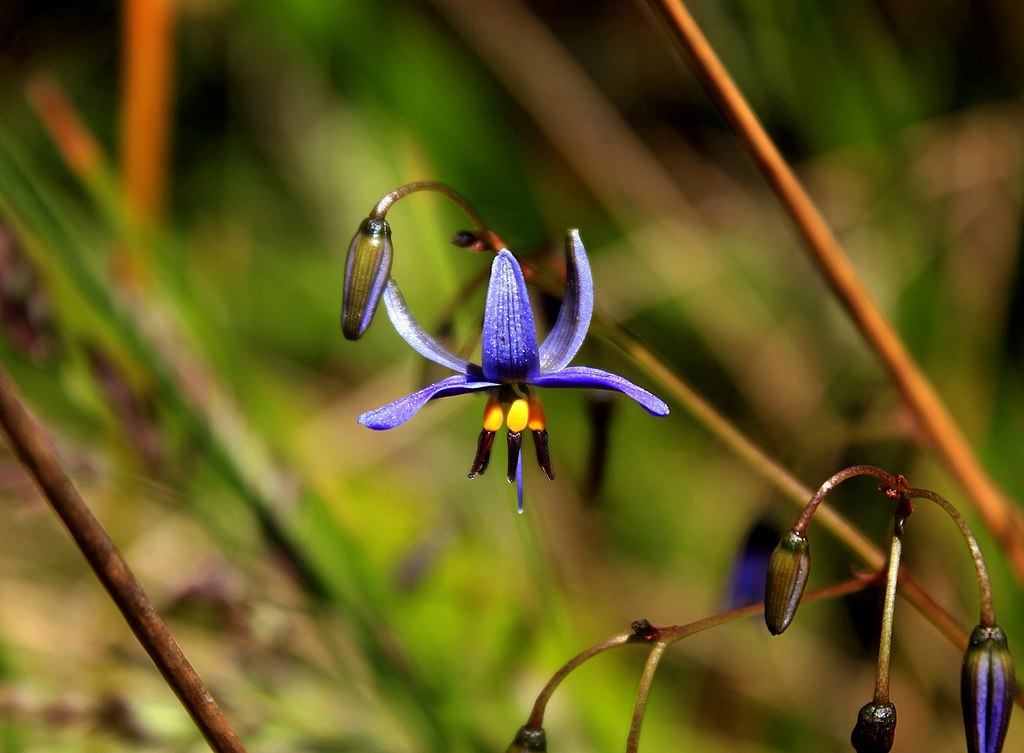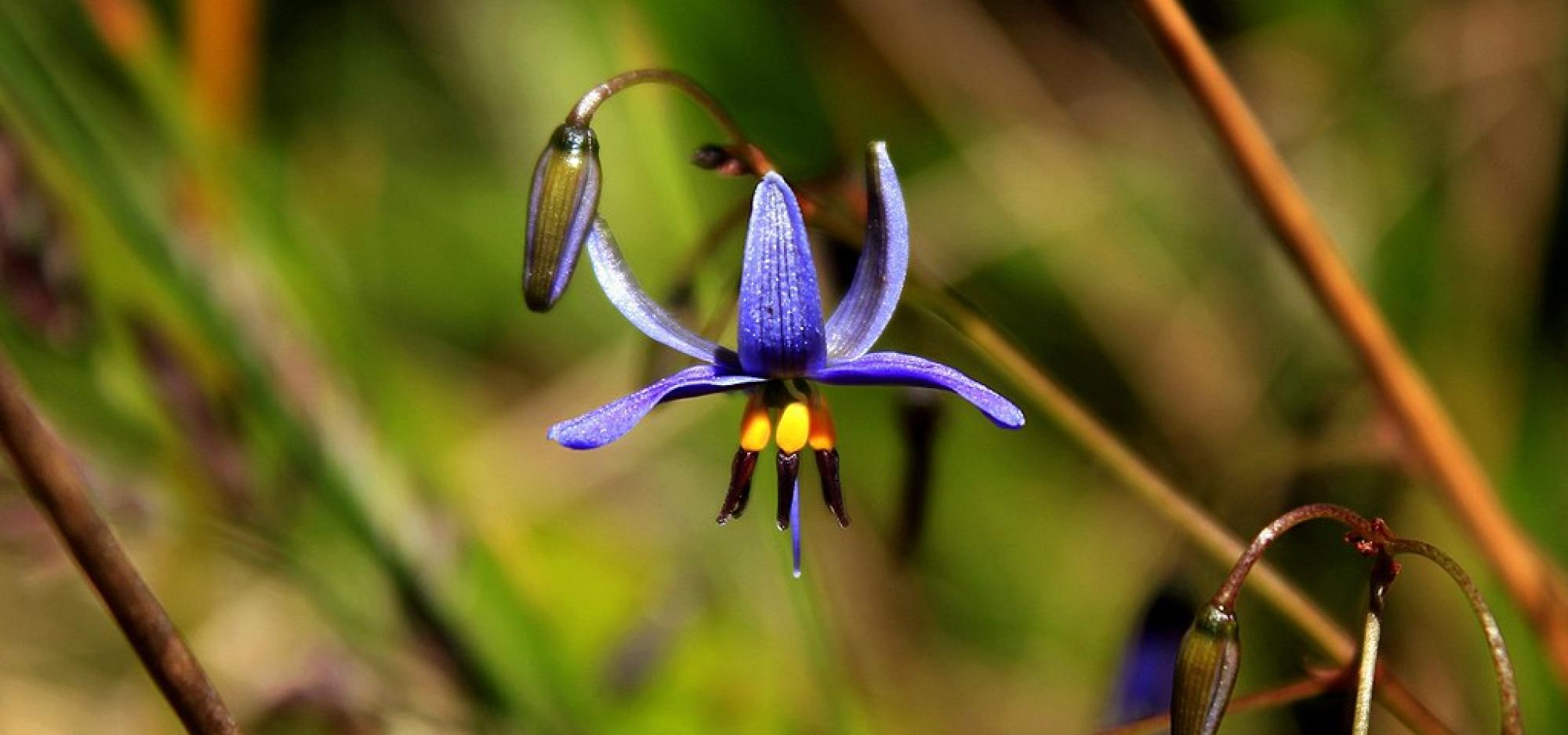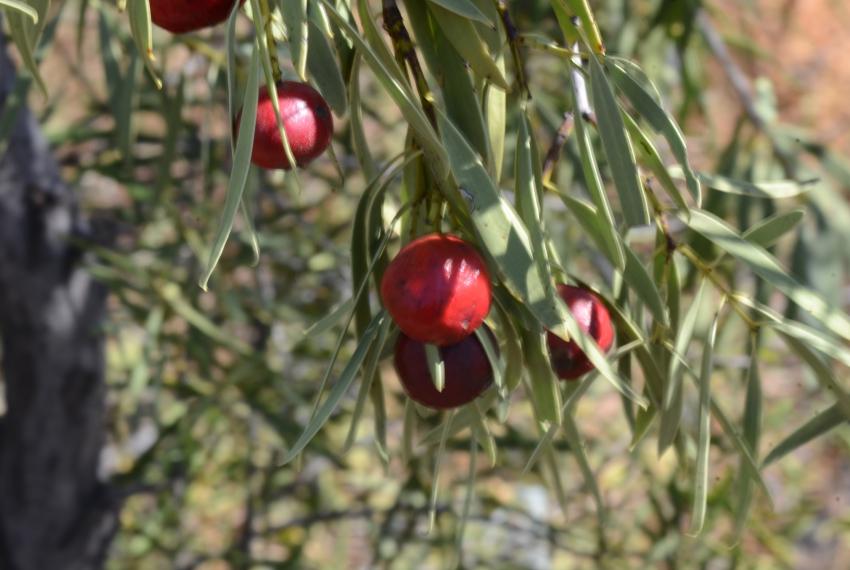Noongar Name: Mangar
Botanical Name: Dianella revoluta R.Br.
Common Name: Blueberry Lily, Blueberry Flax Lily, Spreading Flax-lily, Black-anther Flax-lily

Appearance
The Blueberry Lily has long, leafy, grass -like stems that are glossy green and leathery in appearance. It produces small, bell-shaped blue/purple flowers that appear in late spring to summer. The fruits are globular and purple (SERCUL, 2017)
Distribution
Avon Wheatbelt, Carnarvon, Coolgardie, Esperance Plains, Geraldton Sandplains, Great Victoria Desert, Hampton, Jarrah Forest, Mallee, Murchison, Swan Coastal Plain, Warren, Yalgoo.
Uses
Fruits are sweet, blue-purple berries ranging from 4–10mm in diameter, containing a few tiny, nutty-flavoured seeds. These may be enjoyed fresh or cooked in sweet or savoury dishes, while the plant root can be pounded and roasted for eating. Blueberry Lily was traditionally used as a tea ingredient in Aboriginal medicine — both root and leaf were used to remedy colds and headaches, respectively. A word of caution: not every Dianella species produces berries that are safe for human consumption
Sources
https://tuckerbush.com.au/blueberry-lily-dianella-revoluta/
https://florabase.dpaw.wa.gov.au/browse/profile/1259
Vivienne Hansen and John Horsefall 2019, Noongar Bush Tucker – Bush food plants and fungi of the south-west of Western Australia UWAP - UWA Publishing

